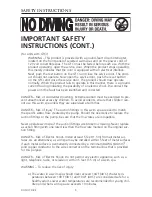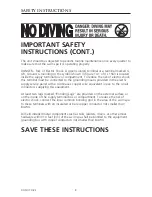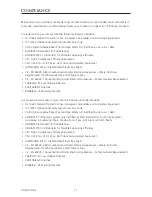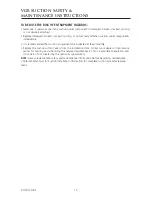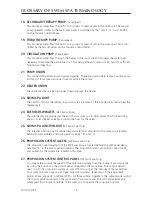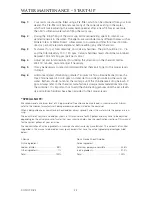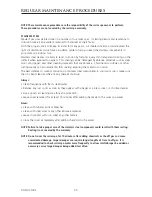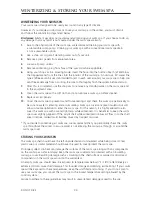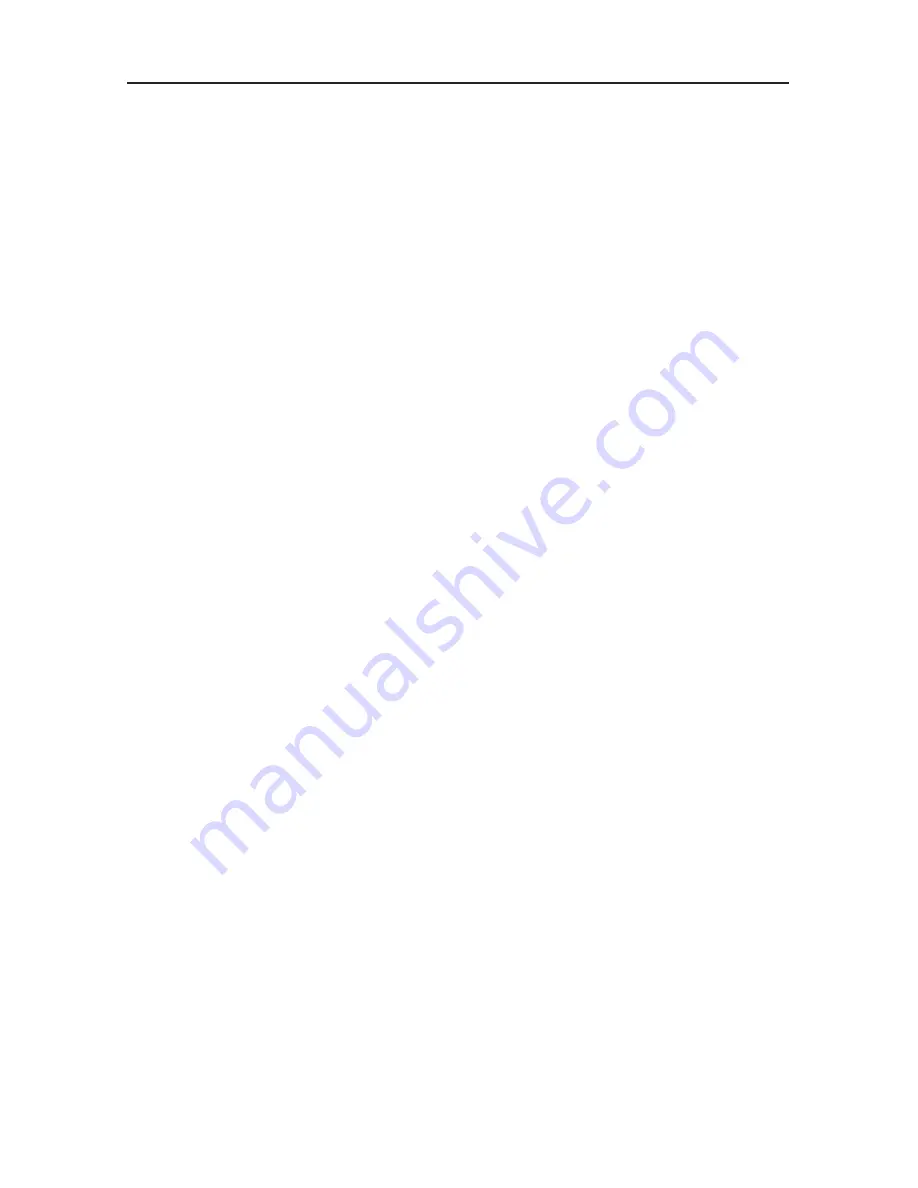
19
DO NOT DIVE.
100
DO NOT DIVE.
WATER CHEMISTRY TERMS YOU SHOULD KNOW
Before jumping into Water Maintenance, here are some terms to help you.
1.
Parts per million, or ppm:
This is a form of measurement used in most pool or swim spa
chemical readings. Best described as any one million like items of equal size and make up,
next to one unlike item, but of equal size. This would be one part per million.
3. Total Alkalinity:
Measures substances in your water such as hydroxides, carbonates and
bicarbonates. When at the proper levels, these elements keep your water from clouding and
growing bacteria, as well as prevent the inner workings of your swim spa from deteriorating
or forming scale. TA also helps to stabilize pH. The higher the TA level (as long as it is within
the recommended range), the less likely the pH is to change. You are looking for a range
between 80 - 120 ppm. With low alkalinity, the pH will fluctuate and be harder to control.
With high alkalinity, it becomes extremely difficult to change the pH.
4.
pH or potential hydrogen:
This indicates the acidity or basicity of the water. The goal is to
have a neutral, stable pH to prevent spa damage and unhealthy conditions. Low pH levels can
corrode metals, etch or stain fiberglass or acrylic, cause unsanitary conditions that irritate the
eyes or skin and destruct the total alkalinity of the water. High pH can cause cloudy water,
eye or skin irritation, scale formation and poor chlorine or bromine efficiency. Note that the
chemicals you are using to sanitize and clean your hot tub can also lower or raise the pH level
in the water. You want this range to fall between 7.2 - 7.6 on the scale. Unfortunately, there
are lots of variables to preventing high pH in your swim spa. You can use the chart to the
right to help you balance it.
5.
Shocking:
By shocking the water in your hot tub, you remove organic compounds from the
water, kill bacteria, remove bromamines or chloramines and reactivate the bromides in the
spa for cleaner water. You should shock your water once a week, after heavy bather use or
any time free chlorine levels test lower than total chlorine levels. To do this, either add oxi-
dizer/non-chlorine shock to burn off the chloramines or add extra chlorine to raise the chlo-
rine level above 8 ppm. Oxidizer/non-chlorine shock acts by releasing oxygen in the water,
which serves a similar function as chlorine. An advantage to using this type of shock is that
the water is safe to enter after 15 minutes of the application and excessive sanitizer (chlorine)
levels do not occur. However, an oxidizer/non-chlorine shock doesn’t disinfect the water for
bacteria. If you use chlorine to shock, you must wait until the total chlorine reading is below
5 ppm.
6.
Sequestering:
This can be defined as the ability to form a chemical complex which remains in
solution, despite the presence of a precipitating agent (i.e. calcium and metals). If the miner-
als and metals in water are not sequestered, they can cause a reaction, turning the water
brown, red, orange or green depending on the minerals and metals present in your water. It
is important to add a sequestering agent when adding water to your hot tub and even on a
regular basis (if bottle instructions recommend doing so). Common names for sequestering
chemicals are; minquest, stain and scale control, metal-x, spa defender, spa metal gone, (etc.).
7.
Filtration:
Filters are necessary to remove particles of dust, dirt, algae, etc. that are continu-
ously entering the water. If the swim spa is not operated long enough each day for the filter
to do a proper job, this puts a burden on the chemicals, causing extra expense. Filtration
time will depend on the water capacity, pump and filter size and, of course, bather load.
Spare filter cartridges should be kept on hand to make it easy to frequently clean the car-
tridge without the need for a long shut down. This will also allow the cartridge to dry out
between usages, which will increase the cartridge life span as much as twice. Replace the
cartridge when the pleats begin to deteriorate. Cartridge cleaning should be done a minimum
of once a month. More often with a heavy bather load. See “Filter Cleaning” in the Regular
Maintenance section.

